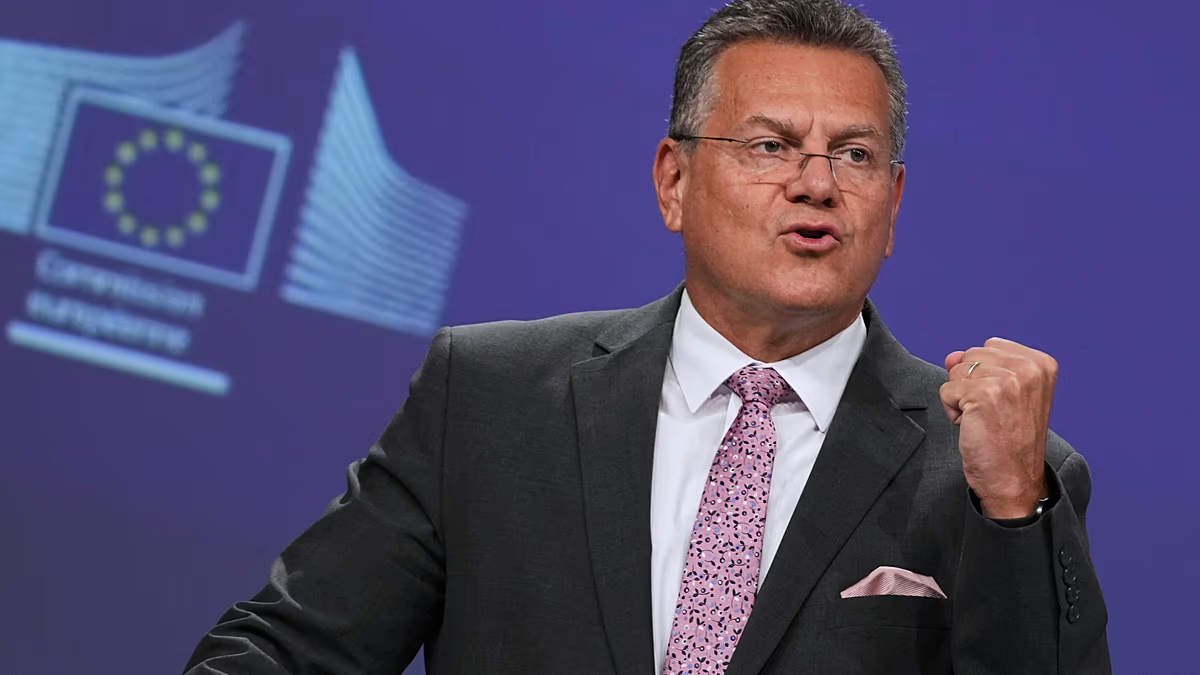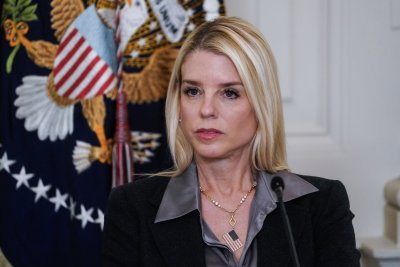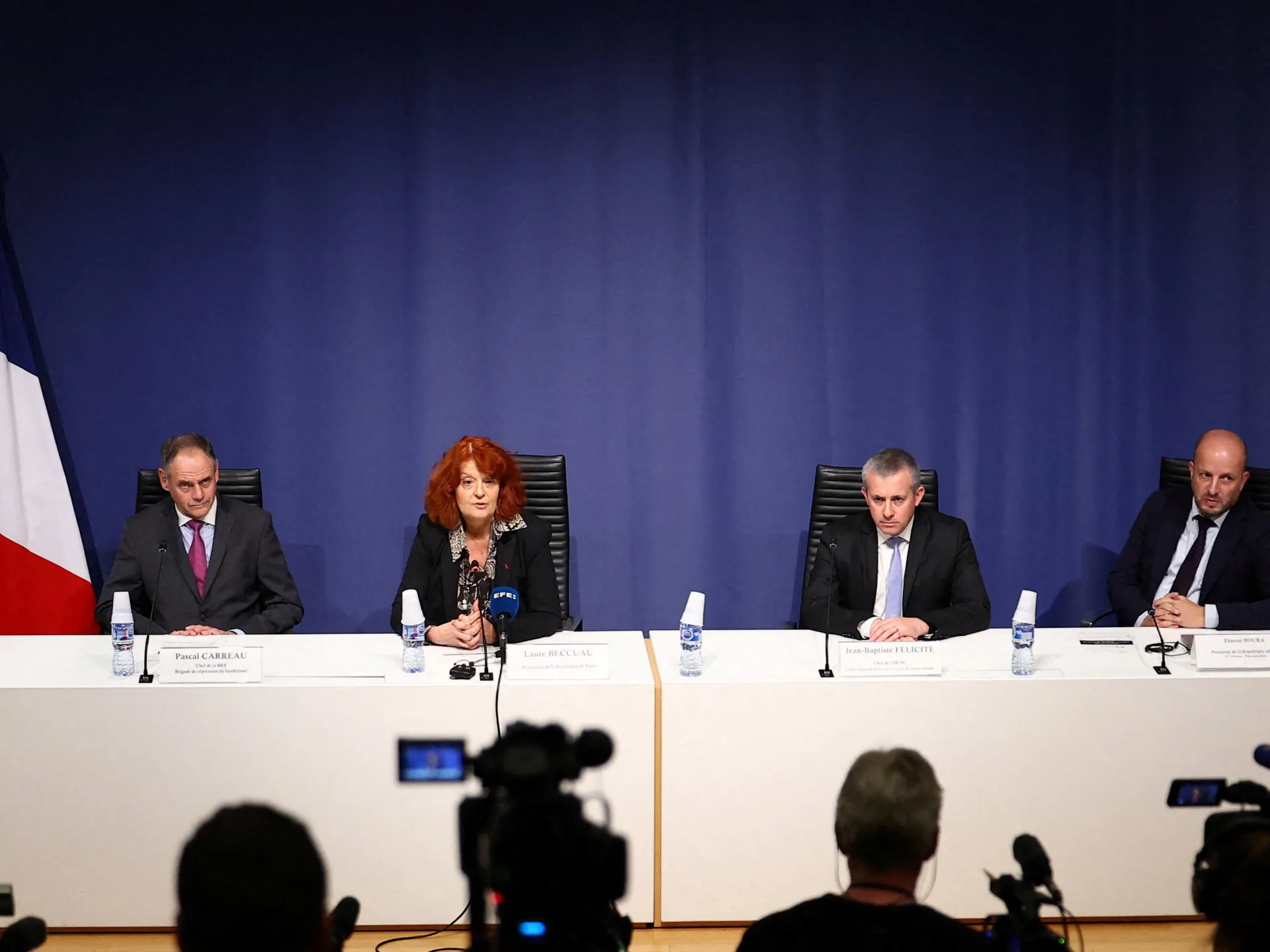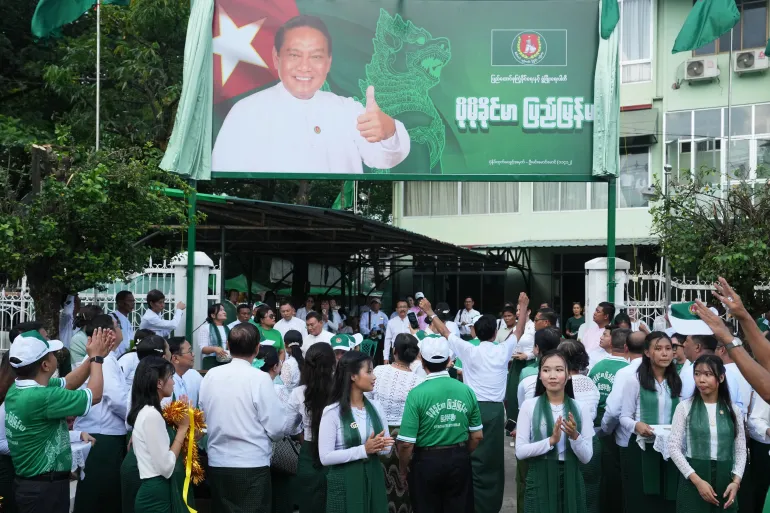Celebrity Traitors stars set for double plot twist in penultimate episode
The Faithfuls have finally banished a Traitor, as Jonathan Ross was voted out – but the twists aren’t over as the Celebrity Traitors finale draws near
The Celebrity Traitors has been packed with twists and turns so far, and though the show is nearing its end, those plot twists are far from over. A dramatic double twist has already been revealed for the penultimate episode.
The hit BBC series is set to conclude on 6 November. Ahead of that episode, Claudia Winkleman revealed two twists that would shake things up for the celebs. It comes just after the Faithfuls finally managed to nab a Traitor and sent Jonathan Ross home.
As the Faithfuls celebrated their victory, Claudia rained on their parade by revealing that, at the next roundtable, banished players would not tell the remaining group if they were Faithful or a Traitor. “After tomorrow, the banished players will not reveal their true identity,” Claudia warned.
READ MORE: Shark Power Pro vacuum with ‘excellent suction’ drops £90 in early Black Friday saleREAD MORE: Claudia Winkleman ‘breaks character’ on Celebrity Traitors as fans spot ‘TV gold’
This is not the only twist. Claudia also revealed to the remaining Traitors, Alan Carr and Cat Burns, that they had to murder in plain sight that evening. In letters read by each deceitful player, Claudia said: “Traitors, tonight there will be no secret meeting in the turret. Instead you must murder in plain sight at tonight’s dinner.
“To do this one Traitor must toast the player you want to murder while saying the words ‘Parting is such sweet sorrow’ followed by their name. You must do this before the night is over.”
Alan has already killed in plain sight, having murdered his friend Paloma Faith by touching her face after touching a ‘poisoned’ plant. In a quiet discussion, Cat and Alan agreed that he would be the one to kill again, as Cat wasn’t very convincing when she tried to say it.
Cat suggested that Alan pretend to quote recently banished Stephen Fry whilst delivering the phrase, which is from Shakespeare’s Romeo & Juliet.
In an aside, Alan joked that he always had to do the Traitors “dirty work”. He said: “I have to do all the dirty work for these traitors. I’m surprised they don’t have me up in that turret with a hoover doing some light dusting. Why is it always me?”
The episode also saw Jonathan Ross head home. He was the first Traitor caught on the show and was voted out by six people, including both Cat and Alan. In fact, all bar two people voted for Jonathan, with the outliers being him and David Olusoga. David voted for Nick Mohammed.
Jonathan’s exit speech, dubbed “ridiculous” by Joe Marler, kept the other Faithfuls on their toes. He said: “I’ve got no idea what everyone is doing wrong.
“I cannot believe you’ve done it again. I can’t believe I’m standing here for no good reason so I don’t want to be rude but you’re idiots. But I am not judging because it’s fiendish.
“I’m not blaming the players, I’m blaming the game. I am now and have always been throughout the game completely faithful… to the Traitors!”
Like this story? For more of the latest showbiz news and gossip, follow Mirror Celebs on TikTok, Snapchat, Instagram, Twitter, Facebook, YouTube and Threads.
White House urged firing live bombs, not dummies, for Trump’s visit to Navy celebration: AP sources
WASHINGTON — The White House pressed U.S. Navy officials to launch 2,000-pound live bombs instead of dummy explosives during an elaborate military demonstration for the service’s 250th anniversary celebration that President Trump attended, two people familiar with planning for the event told the Associated Press.
One person familiar with the planning said White House officials insisted to Navy planners that Trump “needed to see explosions” instead of just a “big splash” during the Oct. 5 demonstration.
Original planning for what the Navy dubbed the Titans of the Sea Presidential Review called for military personnel to use dummies and not live bombs, a third person familiar with the Navy’s planning said.
That person, who like the others was not authorized to speak publicly on the matter and spoke on the condition of anonymity, would not comment on why the Navy decided to switch to live bombs.
The White House said no switch was made. Deputy press secretary Anna Kelly in a statement said: “Organizers always planned to use live munitions, as is typical in training exercises.”
The episode is the latest example of the Trump administration turning the military toward the president’s wishes in ways large and small — from summoning generals from around the world to Washington for a day of speeches to his lethal strikes on alleged drug boats in the Caribbean.
The Navy and other military branches typically use dummy, or inert, bombs for training and demonstrations. Dummies are cheaper than live bombs because they do not contain expensive explosives, fuses and other components. They’re also safer.
However, military officials often argue that the use of live ammunition for events like the 250th birthday celebration also fulfills a training purpose and that the ordnance would have been expended anyway at a later date. The Navy declined to comment.
The switch required Navy officials to change up detailed plans for the Norfolk military demonstration to ensure safety protocols were met, according to the three people familiar with the planning.
The White House pushed forward with the event despite a U.S. government shutdown, which has led nonessential federal workers to be sent home without pay and reduced operation of many non-critical government services.
A celebration for the Marines also used live artillery
Confirmation that the Navy decided to use live bombs instead of dummies at the Naval Base Norfolk event comes as the administration faces scrutiny over an Oct. 18 live fire demonstration at Camp Pendleton, in which a misfire of a live artillery round led to shrapnel spraying onto Interstate 5 in Southern California.
No one was injured when shrapnel struck two California Highway Patrol vehicles. That Camp Pendleton event marking the Marines 250th anniversary was attended by Vice President JD Vance and Defense Secretary Pete Hegseth.
Last week, 27 members of the California congressional delegation and the state’s two senators sent a letter to Hegseth asking whose decision it was to shoot live artillery over the busy freeway and how authorities planned for the safety risks.
California Gov. Gavin Newsom, a Democrat who says he’ll weigh a 2028 White House run after the midterm elections next year, criticized the decision and closed a section of the roadway connecting San Diego to Los Angeles for hours during the Oct. 18 Marine showcase. The White House criticized him for closing the highway and said the Marines said there were no safety concerns.
Trump is a fan of military pomp
Trump hasn’t been shy about his fondness for pomp and pageantry that celebrates military might.
In his second term, he has pushed the U.S. services to hold big parades and demonstrations, an idea inspired by a Bastille Day parade he attended in France early in his first term. He was a guest of honor at the 2017 event, which commemorated the 100th anniversary of the U.S. entry into World War I.
The Army included tanks in a June parade in the nation’s capital, requested by Trump, to mark its 250 years despite concerns from city officials that the heavy vehicles would damage the city’s streets. And he appeared to relish the massive military welcome he received last month during his second state visit to the United Kingdom.
At the Navy celebration this month in Norfolk, the president and first lady Melania Trump watched the military demonstration from the deck of an aircraft carrier before Trump delivered a speech in which he criticized his political opponents and attacked Democratic lawmakers.
At sea, the Navy had seven Arleigh Burke-class guided missile destroyers fire a variety of their guns, including a large 5-inch gun. Four destroyers also launched the Navy’s Standard Missile 2 (SM-2). Each missile costs approximately $2 million.
Meanwhile, aircraft from USS Truman’s air wing fired missiles and general-purpose bombs and performed a strafing run with their gatling guns. The Navy’s MH-60S Seahawk helicopters also fired hydra rockets and guns.
Trump then spoke on a pier between two towering Navy vessels, an aircraft carrier and an amphibious assault ship. The carrier displayed a Navy fighter jet that had the words “President Donald J. Trump ‘45-47’” printed on the fuselage, right under the cockpit window.
A Navy spokesperson told the AP shortly after the event that sailors put the president’s name on the aircraft for the visit and this was “customary for visits of this type.”
In addition to the live bomb demonstration, Navy destroyers launched missiles and fired shells into the Atlantic Ocean, and Navy SEALs descended from helicopters and fighter jets catapulted off vessels.
The shift to live bombs also required further spreading out of the guided missile destroyers in the waters off Norfolk for the military demonstration.
Madhani, Toropin and Mascaro write for the Associated Press.
Teenage cricketer dies in Melbourne after being hit by ball
An Australian teenager has died after he was hit by a cricket ball during a practice session in Melbourne.
The 17-year-old was training in cricket nets in Ferntree Gully on Tuesday when he was struck in the head or neck by a ball from an automatic bowling machine. It’s believed he was wearing a helmet.
Emergency workers were called to the scene shortly before 17:00 local time (06:00 GMT) and the boy was rushed to Monash Children’s Hospital in critical condition. He was put on life support but died on Wednesday.
The boy’s local cricket club said it was “absolutely devastated” by the “tragic passing” of one its players and the teenager’s death “will be felt by all in our cricket community”.
The local cricket association president, Arnie Walters, said the boy was “both talented and popular in local cricket,” according to the Australian Broadcasting Corporation (ABC).
“I know how heavily this news will land across our community and we will provide any and all support we can to our clubs and cricket family,” he said.
In a social media post, the boy’s cricket club extended their condolences to his family and friends and “to all of those who knew [him] and the joy that he brought”.
“We ask you to please respect the privacy of [the boy’s] family during this time,” the post said.
On behalf of the teenager’s family, the club also thanked Ambulance Victoria, the police and hospital staff.
The BBC has contacted Cricket Australia and Cricket Victoria for comment.
The incident comes just over a decade after Australian cricketer Phillip Hughes died after being struck on the neck by a ball while batting in the Sheffield Shield in 2014.
His death, for which a coroner ultimately found no-one was to blame, sparked improvements to safety equipment for those playing the sport.
Dictionary.com declares ‘6-7’ the word of the year

Generation Alpha’s perhaps meaningless slang term “6-7” has been declared word of the year for 2025 by Dictionary.com. Photo by Adam Schrader
Oct. 29 (UPI) — Generation Alpha’s perhaps meaningless slang term “6-7” has been declared word of the year for 2025 by Dictionary.com, beating out words including “aura farming,” “broligarchy,” “tradwife” and the dynamite emoji.
“Each year, Dictionary.com’s Word of the Year and short-listed nominees capture pivotal moments in language and culture,” Dictionary.com said in a news release Wednesday.
“These words serve as a linguistic time capsule, reflecting social trends and global events that defined the year.”
The reference site said that, in determining the word of year, its lexicographers analyzed data including news headlines, social media trends and search engine results. Still, even Dictionary.com said it isn’t sure what it means.
“And now for the moment adults around the world have been waiting for: What does 67 mean? Well…it’s complicated,” the lexicographers said.
The term 6-7 is believed to have originated from rapper Skrilla’s song “Doot Doot (6-7),” which was released last December and was quickly used as a sound by TikTok creators making compilation videos of LaMelo Ball of the Charlotte Hornets. It quickly spread.
“Within weeks, teachers were trading tips online about how to get their students to stop saying 6-7 all day long,” Dictionary.com said.
Some say that it’s meant as an ambivalent response, like “maybe-this, maybe that.” But more often than not, Generation Alpha seems to just use it as a response to any question.
“Perhaps the most defining feature of 67 is that it’s impossible to define. It’s meaningless, ubiquitous, and nonsensical. In other words, it has all the hallmarks of brainrot,” Dictionary.com said.
“It’s the logical endpoint of being perpetually online, scrolling endlessly, consuming content fed to users by algorithms trained by other algorithms.”
The Normalization Trap: A Former Minister’s Warning on Taliban Diplomacy
For decades, Afghanistan has been dubbed the “graveyard of empires,” but a more enduring and painful truth is its role as a chessboard for regional rivalries. Today, a dangerous new chapter is unfolding: a tense disconnect between escalating violence on the ground and a quiet diplomatic normalization in foreign capitals. As powers like India recalibrate their stance toward the Taliban, a critical question emerges: is engagement building a pathway to peace, or merely rewarding impunity? In an exclusive Q&A, Mr. Masoud Andarabi, Afghanistan’s former Minister of Interior and Acting Director of the National Directorate of Security (NDS), issues a stark warning from the front lines of this crisis: without verifiable conditions, this new diplomatic track risks cementing Afghanistan’s status as a proxy battlefield and an incubator for global terrorism, all while its people endure a silent crisis of “generational trauma.”
The Dangerous Illusion of Normalization
Q: In your article for Cipher Brief, you describe a “dangerous two-track dynamic” of kinetic escalation on the ground and diplomatic normalization in capitals. Given that India’s engagement with the Taliban seems to grant them legitimacy without verifiable commitments, what specific, verifiable actions should a power like India demand from the Taliban before such high-level visits to avoid fueling this dynamic?
A: India should set clear, verifiable conditions before any high-level engagement with the Taliban. At a minimum, New Delhi should insist on three measurable actions:
- Restoration of women’s rights – including the right to education and employment.
- Concrete counterterrorism steps – such as dismantling safe havens and arresting members of al-Qaeda, the Islamic Movement of Uzbekistan (IMU), Tehrik-e-Taliban Pakistan (TTP), and the East Turkistan Islamic Movement (ETIM).
- Protection of former Afghan security personnel – many of whom fought terrorism with Indian support and are now being detained, tortured, or executed by the Taliban.
The Taliban continues to persecute minorities, suppress free media, and rule through coercion, not consent. India, as the world’s largest democracy, should not normalize relations with an authoritarian movement that denies fundamental rights and harbors transnational militants. Engagement without conditions only reinforces the Taliban’s impunity and erodes regional security.
Q: You characterize the actions of both Delhi and Islamabad not as malice but as “strategic realism.” Does this mean that for Afghanistan to achieve stability, it must fundamentally accept that its neighbors will always act in their own competitive interests, and simply try to manage it?
A: Yes. Based on my own experience in Afghanistan, stability requires accepting a difficult reality: our neighbors will always act through the lens of their own national interests. The task for any Afghan government is not to escape this rivalry, but to manage it with discipline and balance.
During the Republic, India maintained four consulates in Afghanistan—two of them near the Pakistani border. That decision deeply alarmed Islamabad and fueled Pakistan’s perception that Afghan territory was being used to encircle it. Such steps may have had diplomatic value, but they carried strategic costs that were never fully weighed.
Going forward, Afghanistan must adopt a policy of strict neutrality—restricting both Indian and Pakistani use of its soil for competitive ends, while focusing on national interests above regional alignments. Stability will come not from choosing sides, but from ensuring that no side can use Afghanistan as a platform for its rivalry.
Q: Regarding your proposal for “conditional engagement,” what is a single, achievable benchmark on counter-terrorism that the international community could universally demand from Kabul, and how could it be verified in a way that is convincing to both the West and regional powers?
A: A single, achievable benchmark on counterterrorism should be the verifiable dismantling of terrorist training and recruitment networks inside Afghanistan, including those linked to the Tehrik-e-Taliban Pakistan (TTP), al-Qaeda, and the Islamic Movement of Uzbekistan (IMU).
Verification must not rely on Taliban assurances. It should involve independent monitoring through UNAMA, supported by satellite imagery, shared intelligence from regional and Western partners, and credible field reporting. Only external verification can make any Taliban commitment meaningful.
Current backchannel intelligence contacts between the Taliban and Western agencies may offer short-term tactical benefits, but they carry long-term risks. The Taliban’s continued expansion of radical madrasas, its protection of foreign militants, and its repression of women’s education all point to a future threat environment in the making.
Without verifiable counterterrorism action, engagement risks legitimizing Afghanistan’s return as a sanctuary for global terrorism. Conditional engagement must therefore combine immediate, measurable security steps with sustained political pressure for broader governance and, ultimately, elections that allow Afghans to determine their own future.
The Regional Quagmire: A Shared Threat to All
Q: Pakistan’s deep leverage inside Afghanistan is well-documented, but it has also resulted in significant blowback, including attacks from groups like the TTP. From your perspective, is Pakistan’s current policy a net strategic gain or loss for its own national security?
A: Pakistan’s policy toward Afghanistan has been a net strategic loss for its own national security. For decades, Islamabad has pursued the illusion that supporting proxy groups could secure influence in Kabul. This approach began in the 1990s under Interior Minister Nasrullah Babar, when Pakistan helped create and arm the Taliban, a policy that ultimately contributed to the conditions leading to 9/11. After 2008, Pakistan repeated the same mistake, backing the Taliban’s resurgence. The result today is a regime that harbors transnational militants and allows the Tehrik-e-Taliban Pakistan (TTP) to operate freely, threatening Pakistan itself.
Islamabad’s strategy has produced instability, international isolation, and the empowerment of extremist actors beyond its control. For Afghanistan’s de facto authorities, the lesson is clear: do not be drawn into the India–Pakistan rivalry. Kabul must restrict the use of Afghan soil against any neighbor, monitor foreign influence carefully, and assure both Delhi and Islamabad that Afghanistan will not serve as a platform for proxy competition. True stability will come only when Afghanistan acts as a neutral, sovereign state, neither a client nor a battlefield for others. And I believe a true democracy in Afghanistan can assure that.
Q: You propose a U.S.-led regional security initiative with monitoring mechanisms. Given the profound distrust between India and Pakistan, what would be a truly impartial body capable of monitoring such a pact? The UN? A coalition of neutral states?
A: Given the level of distrust between India and Pakistan and the nuclear dimension of their rivalry, a hybrid mechanism combining the United Nations with select neutral states would offer the most realistic path forward. The UN provides legitimacy and an existing framework for conflict monitoring, while a coalition of neutral states like Japan, could bring technical credibility and political distance from regional rivalries.
The United States should play a catalytic and convening role, even if its direct influence is limited. Washington’s engagement, alongside China and key UN partners, could help establish minimal confidence-building measures: verified incident reporting along the border, humanitarian coordination, and early-warning systems for escalation.
The June clashes underscored how quickly border violence between two nuclear-armed neighbors can spiral. It’s time for the U.S., China, and the UN to take a more active role in preventing South Asia’s oldest rivalry from becoming its most dangerous flashpoint.
Q: Your analysis focuses on India and Pakistan. How does China’s growing engagement with both Kabul and Islamabad—and its own security concerns about Uyghur militancy—complicate or perhaps even offer a solution to this entrenched India-Pakistan rivalry on Afghan soil?
A: China’s engagement with both Kabul and Islamabad is narrow and security-driven, not transformative. Beijing’s primary concern is the East Turkistan Islamic Movement (ETIM) and the risk of Uyghur militancy spilling into Xinjiang. Through close coordination with Pakistan and calculative engagement with the Taliban, China seeks to ensure ETIM remains contained, rather than to address Afghanistan’s broader instability.
While Chinese investments and economic outreach may give the appearance of regional engagement, Beijing’s strategy remains transactional and defensive, focused on countering specific threats, not building regional order. This limited approach neither resolves nor balances the India–Pakistan rivalry. If anything, China’s alignment with Pakistan reinforces the asymmetry in South Asia and risks deepening rather than mitigating the competition on Afghan soil.
The Path to Sovereignty: Neutrality and Legitimacy
Q: You’ve argued compellingly that external competition “saps Afghan agency.” In your view, what is the single most important step the Taliban’s de facto authorities could take right now to assert genuine sovereignty and reduce their vulnerability to being used as a proxy battlefield?
A: The single most important step the Taliban could take to assert genuine sovereignty is to return power to the Afghan people through free and inclusive elections. No state can claim true sovereignty while denying its citizens the right to choose their leaders. The Taliban’s current authoritarian model has isolated Afghanistan, empowered foreign interference, and turned the country into a proxy arena for regional powers.
By restoring democratic participation, allowing political diversity, women’s involvement, and media freedom, the Taliban would move from ruling by force to governing by legitimacy. Only then could Afghanistan reclaim genuine sovereignty and begin to shape its own future, independent of external manipulation.
Q: Finally, looking beyond crisis management, what is the first, most critical step in shifting Afghanistan’s trajectory from being a “chessboard for others’ strategies” back toward a truly sovereign state that determines its own future?
A: The first and most critical step is for Afghanistan to restore genuine neutrality—to stay out of the India–Pakistan rivalry and manage both relationships with strategic balance. Past governments, particularly during the Republic, had opportunities to do so but failed, despite strong international support. Instead, foreign competition seeped into Afghan politics, eroding sovereignty from within.
Moving forward, Afghanistan must rebuild legitimacy through democracy, not repression. Some argue that democracy cannot work in Afghanistan, but that view ignores the will of the Afghan people. Afghans risked their lives to vote—even losing fingers to prove their commitment. The Republic did not fail because Afghans rejected democracy; it failed because of poor leadership and mismanagement, both domestically and in foreign policy.
True sovereignty will come only when Afghans are again allowed to choose their leaders freely and when their government serves national interests rather than foreign agendas. Neutrality in regional politics and legitimacy at home are the twin pillars of a stable, independent Afghanistan.
Q: You state that the human cost is the “clearest metric of failure.” Beyond displacement and livelihoods, what is one less-discussed, tangible impact of this proxy war on the daily lives of ordinary Afghans that the world is missing?
A: When we talk about failure in Afghanistan, the clearest metric isn’t just economic collapse , it’s generational trauma.
Beyond displacement and loss of livelihood, the most enduring cost of this proxy war is the generational loss of normalcy. In nearly every Afghan village, there is a family that has lost someone—a father, a son, a husband—to four decades of conflict. Few countries have endured such continuous trauma. The wars of the mujahideen era, the Taliban’s rise, the Republic’s fall, and now renewed regional rivalries have left almost no Afghan household untouched.
Education and healthcare systems have collapsed, women and children bear the greatest suffering, and an entire generation has grown up knowing only conflict. This is not just a humanitarian tragedy—it is a strategic one. A population stripped of opportunity becomes vulnerable to radicalization and manipulation. If the current India–Pakistan tensions spill further into Afghanistan, they risk igniting yet another cycle of destruction that Afghans can no longer afford to endure.
This sobering assessment leaves no room for ambiguity: the current path of unconditional engagement rewards impunity and fuels regional insecurity. The alternative is a dual mandate. Externally, powers like India and Pakistan must anchor diplomacy to verifiable acts—on women’s rights, counter-terrorism, and protection of allies. Internally, the only exit from this cycle is for the Taliban to exchange coercion for consent. True sovereignty will not be gifted by neighbors nor won through proxy battles; it will be earned only when Afghans are once again allowed to choose their own leaders. The nation’s future hinges on this shift from being a chessboard for others to becoming a sovereign state for its people.
Emily Ratajkowski turns heads as she shows off cleavage in plunging black coat with Swarovski necklace on red carpet
MODEL Emily Ratajkowski looks a real treasure at an exhibition to celebrate the Swarovski jewellery brand.
The US star, 34, wore a revealing black coat and glittering crystal necklace at the Los Angeles event marking the Austrian company’s links to Hollywood.
Reality TV sisters Sarah Jane Nader, 23, and Brooks Nader, 28, also sparkled on the red carpet.
They are appearing in the Disney+ show Love Thy Nader, which follows their attempts to make it as models in New York.
Brooks said: “I’m shocked because I know that we’re just psychos at heart.”
It comes as Emily last week bared her soul about how she suffered from self-doubt.
She revealed how writing her 2021 memoir My Body had sparked feelings of inadequacy.
The best-selling author, whose memoir has sold millions of copies, recently teamed up with Lena Dunham, 39, creator of TV series Girls, for a brand new show.
Talking to Beyond Noise magazine, Emily said: “I’ve had a real journey related to imposter syndrome. I wrote my book literally on my phone.”
She added: “That was five years ago.
“Now I have a desk. I have my bookshelf. I have a proper computer.
“I’ve really embraced it, but I loved how I could trick myself into thinking what I was doing wasn’t important.”
U.S. will share tech to let South Korea build a nuclear-powered submarine, Trump says
GYEONGJU, South Korea — The United States will share closely held technology to allow South Korea to build a nuclear-powered submarine, President Trump said on social media Thursday after meeting with the country’s president.
President Lee Jae Myung stressed to Trump in their Wednesday meeting that the goal was to modernize the alliance with the U.S., noting plans to increase military spending to reduce the financial burden on America. The South Korean leader said there might have been a misunderstanding when they last spoke in August about nuclear-powered submarines, saying that his government was looking for nuclear fuel rather than weapons.
Lee said that if South Korea was equipped with nuclear-powered submarines, that it could help U.S. activities in the region.
U.S. nuclear submarine technology is widely regarded as some of the most sensitive and highly guarded technology the military possesses. The U.S. has been incredibly protective of that knowledge, and even a recently announced deal with close allies the United Kingdom and Australia to help the latter acquire nuclear submarine technology doesn’t feature the U.S. directly transferring its knowledge.
Trump’s post on social media comes ahead of his meeting with Chinese President Xi Jinping, whose country possesses nuclear submarines, and after North Korea in March unveiled for the first time a nuclear-powered submarine under construction. It’s a weapons system that can pose a major security threat to South Korea and the U.S.
As Trump visited South Korea, North Korea said Wednesday it conducted successful cruise missile tests, the latest display of its growing military capabilities.
Pentagon officials didn’t immediately respond to questions about Trump’s announcement on sharing the nuclear sub technology with South Korea.
Megerian and Boak write for the Associated Press. Boak reported from Tokyo. AP writer Konstantin Toropin contributed to this report from Washington.
Dodgers Dugout: Recapping Game 4
Hi and welcome to another edition of Dodgers Dugout. My name is Houston Mitchell. One of the most exciting World Series games in history followed by one of the most boring.
Game 4 thoughts:
—Tinashe sang the U.S. national anthem. Deborah Cox sang the Canadian national anthem. Apparently, Bruce Hornsby and Avril Lavigne were unavailable.
—Orel Hershiser threw out the first pitch. Apparently Dave Goltz and Don Stanhouse were unavailable.
First inning
—You have to wonder which relievers will be available for either team. Let’s look at those Game 3 pitch counts:
Dodgers
Anthony Banda, 3
Justin Wrobleski, 28
Blake Treinen, 15
Jack Dreyer, 5
Roki Sasaki, 29
Emmet Sheehan, 37
Clayton Kershaw, 8
Edgardo Henriquez, 30
Will Klein, 72
It would seem Banda, Treinen, Dreyer and Kershaw would definitely be available.
Blue Jays
Fluharty, 14
Varland, 20
Dominguez, 27
Bassitt, 8
Hoffman, 33
Fisher, 19
Lauer, 68
Little, 28
You have to figure Fluharty, Varland, Bassitt and Fisher would definitely be available.
—No George Springer in the lineup for the Blue Jays. He hurt his side while swinging in Game 3. Sometimes this can be a rallying point for a team, and the player who replaces the star can lift his game, just like Mickey Hatcher did when he replaced Kirk Gibson in the 1988 World Series.
—Will pitcher Shohei Ohtani‘s legs be strong tonight after reaching base nine times yesterday? We’ll find out.
—Great defensive play by Kiké Hernández. He hasn’t quite been Super Kiké at the plate, but he still raises his game in the postseason.
—The Blue Jays made Ohtani work a little, but he got out of it. 19 pitches.
—They pitch around Ohtani, then the runner is stranded. Uneventful first inning.
Second inning
—Seven-pitch inning for Ohtani. Blue Jays should be trying to work the count more.
—Dodgers have first and third and one out. Need to score a run here.
—Kiké brings him home.
—Can Andy Pages break out of his slump?
—He cannot.
Third inning
—Well, that home run by Vladimir Guerrero Jr. was well struck. It’s OK, seemed unlikely the game was going to end 1-0.
—Ohtani has made 42 pitches through three innings. This may become important later.
—The Dodgers are hitting the ball hard, but right at people.
Fourth inning
—Everyone on the field seems tired. Heck, I’m tired. Are you tired?
—Ohtani strikes out the side. He’s the only one who doesn’t look tired. I’m pretty sure he’s some sort of android.
—Ohtani has made 59 pitches through four innings.
—And poor Will Smith. Catches 18 inning last night, back in there today.
—I’m not a fan of these in-game interviews with the manager. The questions are usually lame and it detracts from the actual game going on. People tune in to see the game. They don’t call out to their family, “Honey, quick, you are missing the in-game manager interview!”
Fifth inning
—Ohtani has made 76 pitches through five innings. Perhaps two more innings for him? Maybe three? It’s his last pitching start of the season.
—Can Andy Pages break out of his slump?
—He cannot.
—The Dodgers are not working the count ever. Bieber has made 75 pitches through five.
—I’m guessing this game does not end 2-1.
Sixth inning
—Ohtani made only one bad pitch this game, and it cost him two runs. He has looked great otherwise.
—Ninety pitches through six innings, so one more inning.
—Freeman gets a single and again the next batter doesn’t work the count.
—Bieber talked manager John Schneider into leaving him in the game. Will that come back to haunt him?
—Teoscar Hernández singles, so so far it was a bad decision.
—And now Bieber comes out for left-hander Mason Fluharty.
—And Fluharty gets Max Muncy and Tommy Edman. The Dodgers waste their best chance so far.
Seventh inning
—Single. Double. This game could be out of hand in a hurry.
—That’s it of Ohtani. Anthony Banda is the next man up for the Dodgers.
—If the Dodgers can get out of this giving up only one run, it’s a rousing success.
—The Blue Jays get two runs. It’s 4-1. The Dodgers can come back from that, but they look tired.
—Oh, no! It’s Blake Treinen!
—And he Blake Treinens the place up. It’s 6-1.
—With a tired bullpen, maybe Dave Roberts had no choice but to bring Treinen in today. But let this be the last time we see him this season.
—Like usual, it doesn’t look like the Dodgers will be winning the World Series at home.
—Can Andy Pages break out of his slump here?
—We’ll never know, as Alex Call pinch-hit for Pages and struck out. Heck, Pages could have done that.
Eighth inning
—The Dodgers just look lethargic. Of course, their offense has been below par ever since the start of the NLDS.
—Their starting pitching has carried them, and when the starting pitcher gives up a couple of runs, trouble ensues.
Ninth inning
—Dreyer ate up the innings, which is just what the Dodgers needed. He probably won’t be available in Game 5, but everyone else will be.
—Now the Dodgers need Blake Snell to pitch better than he did in Game 1.
—The offense comes alive a little bit in the ninth, but too little, too late.
—Mason Fluharty is the unsung hero of the game.
—Mason and Hannah were in their assigned seats, but the Dodgers lost, so they are now released from captivity.
—It’s now a best-of-three series, and the Blue Jays have home-field advantage.
—I get the feeling there will be at least one lineup change for the Dodgers in Game 5.
—My prediction remains, like I’ve said all along, Dodgers in um, six.
—More important, we wish Alex Vesia and his wife the best as they go through a trying time.
In case you missed it
Dodgers-Blue Jays World Series matchup a boon for viewership in Japan and Canada
‘Who is this guy?’ Inside Will Klein’s impossible rise to Dodgers World Series hero
Who would have pitched had World Series Game 3 went to 19+ innings?
‘Got an out’: Inside Clayton Kershaw’s brief but clutch appearance in World Series Game 3
This is how much Dodgers fans spent to attend the World Series: ‘This is the golden ticket in L.A.’
Former Dodger Mike Davis wants to be remembered for more than a well-timed walk
The perfect L.A. bakery for this Dodgers moment
And finally
Forget Game 4, let’s look at 30 minutes of highlights from that amazing Game 3. Watch and listen here.
Until next time…
Have a comment or something you’d like to see in a future Dodgers newsletter? Email me at [email protected]. To get this newsletter in your inbox, click here.
US Democratic congressional candidate indicted for Chicago ICE protest | Donald Trump News
Candidate Kat Abughazaleh decried the charges as ‘political prosecution’ amid a Trump standoff with Democratic cities.
A Democratic candidate for the United States House of Representatives has been indicted by the Department of Justice in connection with a protest in front of a federal immigration facility in Illinois.
On Wednesday, in a post on social media, Kat Abughazaleh, 26, announced that she had been charged alongside five other protesters.
Recommended Stories
list of 3 itemsend of list
“This political prosecution is an attack on all of our First Amendment rights,” Abughazaleh, a progressive influencer and journalist, said in the post. “I’m not backing down, and we’re going to win.”
Currently, Abughazelah is running for an open seat representing Illinois’s ninth congressional district, to the north of Chicago. She is slated to appear on the Democratic primary ballot in March.
Federal prosecutors, however, have accused her and her co-defendants of having “physically hindered and impeded” Immigration and Customs Enforcement (ICE) officers at a detention facility in Broadview, Illinois, a suburb of Chicago.
The indictment said they surrounded a government vehicle, “banged aggressively”, stopped the agent from driving forward, and etched “PIG” on the body of the vehicle. It further alleged that the group broke the vehicle’s side mirrors and a windshield wiper.
Abughazaleh was charged with “conspiracy to impede or injure an officer” and “assaulting, resisting or impeding” a federal agent for the September 23 incident.
I have been charged in a federal indictment sought by the Department of Justice.This political prosecution is an attack on all of our First Amendment rights. I’m not backing down, and we’re going to win.
— Kat Abughazaleh (@katmabu.bsky.social) 2025-10-29T16:55:30.610Z
Those charged alongside Abughazelah include Michael Rabbitt, a Democratic politician in Chicago’s 45th Ward, and Catherine Sharp, a Democrat running for a seat on the Cook County Board of Commissioners.
The charges come as the administration of President Donald Trump surges federal agents to Democrat-run cities as part of a large-scale deportation drive.
Several Democratic lawmakers have been charged after participating in counterprotests, including Ras Baraka, the mayor of Newark, New Jersey, and US Representative LaMonica McIver. Baraka has since seen the charges against him dropped.
Trump has also sought to deploy the National Guard to several cities, including Chicago, but has been repeatedly blocked by the courts. The Supreme Court is expected to issue a ruling in the Chicago case, which could have wide-ranging implications for the future of such deployments.
A federal appeals court was also set to hear a Trump administration challenge on Wednesday to a lower court’s ruling barring the National Guard deployment to Portland, Oregon.
As part of those cases, the Trump administration has faced scrutiny over its treatment of immigrants and protesters alike.
The administration has also been criticised for comparing protesters to “terrorists” and pursuing disproportionate charges in court.
Even Abughazelah’s opponent in the 2026 Democratic primary, Evanston Mayor Daniel Biss, was among those condemning Wednesday’s indictment.
“The only people engaged in violent and dangerous behavior at Broadview have been ICE,” Biss said in a statement carried by the local news site Evanston Now.
Biss noted he had also protested the “kidnapping of our neighbours” at the facility multiple times.
“Now, the Trump Administration is targeting protestors, including political candidates, in an effort to silence dissent and scare residents into submission,” Biss said. “It won’t work.”
Why is Donald Trump so interested in rare earth minerals? | TV Shows
The US president has struck a number of deals in his tour of Asia this week.
Since coming back to the White House earlier this year, President Donald Trump has made rare earth minerals one of his top priorities.
He’s focused on securing enough supply for the United States economy.
In March, Trump went as far as signing an executive order, where he invoked wartime powers to increase the production of rare earths.
And this week, he signed several agreements with a number of Asian countries, in the hopes of gaining access to the minerals.
This is all to counter China’s global dominance in this sector and Beijing’s recent restrictions on rare earth exports.
So, why are these minerals so crucial for the US economy? And can Trump break China’s monopoly?
Presenter: Bernard Smith
Guests:
Brian Wong – Assistant Professor in Philosophy at the University of Hong Kong.
Gracelin Baskaran – Mining Economist and Director of the Critical Minerals Security program at Center for Strategic and International Studies.
Huiyao Wang – President and Founder of Center for China and Globalization.
Published On 29 Oct 2025
Disneyland Resort lays off 100 people in Anaheim
Disneyland Resort has laid off about 100 people in Anaheim, as Walt Disney Co. becomes the latest media and entertainment company to cut jobs.
The layoffs occurred Tuesday and came from multiple teams, Disney confirmed.
“With our business in a period of steady, sustained operation, we are recalibrating our organization to ensure we continue to deliver exceptional experiences for our guests, while positioning Disneyland Resort for the future,” a Disneyland spokesperson said in a statement. “As part of this, we’ve made the difficult decision to eliminate a limited number of salaried positions.”
A person close to the company who was not authorized to comment attributed the cuts to an increase in hiring after the parks reopened once the COVID-19 pandemic waned.
Disney’s theme parks are a major economic engine for the Burbank media and entertainment giant.
Last year, the company’s experiences division — which includes its theme parks, cruise line and Aulani resort and spa in Hawaii — brought in nearly 60% of Disney’s operating income.
Earlier this month, the company announced price hikes on most of its single-day, one-park tickets.
The Disneyland Resort layoffs come as entertainment and tech companies have recently shed thousands of jobs.
On Wednesday, Paramount laid off 1,000 employees in a first round of cuts after the company’s takeover by tech scion David Ellison’s Skydance Media. Amazon, Meta, Charter Corp. and NBC News also have announced cuts.
43-year prisoner whose conviction was overturned now faces deportation
PHILADELPHIA — After waiting more than four decades to clear his name in a friend’s 1980 killing, Subramanyam Vedam was set to walk free from a Pennsylvania prison this month.
Vedam and Thomas Kinser were the 19-year-old children of Penn State University faculty. Vedam was the last person seen with Kinser and was twice convicted of killing him, despite a lack of witnesses or motive.
In August, a judge threw out the conviction after Vedam’s lawyers found new ballistics evidence that prosecutors had never disclosed.
As his sister prepared to bring him home on Oct. 3, the thin, white-haired Vedam was instead taken into federal custody over a 1999 deportation order. The 64-year-old, who legally came to the U.S. from India when he was 9 months old, now faces another daunting legal fight.
Amid the Trump administration’s focus on mass deportations, Vedam’s lawyers must persuade an immigration court that a 1980s drug conviction should be outweighed by the years he wrongly spent in prison. For a time, immigration law allowed people who had reformed their lives to seek such waivers. Vedam never pursued it then because of the murder conviction.
“He was someone who’s suffered a profound injustice,” said immigration lawyer Ava Benach. And “those 43 years aren’t a blank slate. He lived a remarkable experience in prison.”
Vedam earned several degrees behind bars, tutored hundreds of fellow inmates and went nearly half a century with just a single infraction, involving rice brought in from the outside.
His lawyers hope immigration judges will consider the totality of his case. The administration, in a brief filed Friday, opposes the effort. So Vedam remains at an 1,800-bed U.S. Immigration and Customs Enforcement facility in central Pennsylvania.
“Criminal illegal aliens are not welcome in the U.S,” a Department of Homeland Security spokesperson said in an email about the case.
‘Mr. Vedam, where were you born?’
After his initial conviction was thrown out, Vedam faced an unusual set of questions at his 1988 retrial.
“Mr. Vedam, where were you born?” Centre County Dist. Atty. Ray Gricar asked. “How frequently would you go back to India?
“During your teenage years, did you ever get into meditation?”
Gopal Balachandran, the Penn State Dickinson Law professor who won the reversal, believes the questions were designed to alienate him from the all-white jury, which returned a second guilty verdict.
The Vedams were among the first Indian families in the area known as “Happy Valley,” where his father had come as a postdoctoral fellow in 1956. An older daughter was born in State College, but “Subu,” as he was known, was born when the family was back in India in 1961.
They returned to State College for good before his first birthday and became the family that welcomed new members of the Indian diaspora to town.
“They were fully engaged. My father loved the university. My mother was a librarian, and she helped start the library,” said the sister, Saraswathi Vedam, 68, a midwifery professor in Vancouver, British Columbia.
While she left for college in Massachusetts, Subu became swept up in the counterculture of the late 1970s, growing his hair long and dabbling in drugs while taking classes at Penn State.
One day in December 1980, Vedam asked Kinser for a ride to nearby Lewisburg to buy drugs. Kinser was never seen again, although his van was found outside his apartment. Nine months later, hikers found his body in a wooded area miles away.
Vedam was detained on drug charges while police investigated and was ultimately charged with murder. He was convicted in 1983 and sentenced to life without parole. To resolve the drug case, he pleaded no contest to four counts of selling LSD and a theft charge. The 1988 retrial offered no reprieve from his situation.
Although the defense long questioned the ballistics evidence in the case, the jury, which heard that Vedam had bought a .25-caliber gun from someone, never heard that an FBI report suggested the bullet wound was too small to have been fired from that gun. Balachandran only found that report as he dug into the case in 2023.
After hearings on the issue, a Centre County judge threw out the conviction and the district attorney decided this month to not retry the case.
Trump officials oppose the petition
Benach, the immigration lawyer, often represents clients trying to stay in the U.S. despite an earlier infraction. Still, she finds the Vedam case “truly extraordinary” given the constitutional violations involved.
“Forty-three years of wrongful imprisonment more than makes up for the possession with intent to distribute LSD when he was 20 years old,” she said.
Vedam could spend several more months in custody before the Board of Immigration Appeals decides whether to reopen the case. ICE officials, in a brief Friday, said the clock ran out years ago.
“He has provided no evidence nor argument to show he has been diligent in pursuing his rights as it pertains to his immigration status,” Katherine B. Frisch, an assistant chief counsel, wrote.
Saraswathi Vedam is saddened by the latest delay but said her brother remains patient.
“He, more than anybody else, knows that sometimes things don’t make sense,” she said. “You have to just stay the course and keep hoping that truth and justice and compassion and kindness will win.”
Dale writes for the Associated Press.
Manny Pacquiao says Floyd Mayweather has “almost” agreed to a rematch
Manny Pacquiao says he has “almost” agreed a rematch with fellow boxing legend Floyd Mayweather.
The former multi-weight world champions first met in 2015, in what was billed as the ‘Fight of the Century’.
Mayweather won after 12 rounds by unanimous decision but Pacquiao said he had a shoulder injury and told the BBC in 2018 that he “cannot retire with peace of mind with that defeat”.
The 46-year-old retired in 2021 but returned to face WBC welterweight champion Mario Barrios in his comeback fight in July, with Barrios retaining his title after a majority draw.
Mayweather has had a string of exhibition bouts since retiring with an undefeated record in 2017 and the 48-year-old American is scheduled to face Mike Tyson next year.
But Pacquiao says Mayweather’s camp are “in negotiations” over a rematch that would “probably” take place in Las Vegas.
“It depends on whether we can understand each other,” the Filipino told Seconds Out., external “My people and his people [are] directly co-ordinating.”
Referring to his injury in 2015, Pacquiao added: “It’s very interesting because, right now, I don’t have a shoulder problem.
“I’m sure the world of boxing will be excited if the rematch will push through. He has his own decision so I cannot prevent him from fighting Mike Tyson.”
Mayweather’s exhibition fight with former heavyweight champion Tyson, 59, is scheduled for next spring but an exact date is yet to be confirmed.
Ex-U.S. defense contractor head pleads guilty to selling trade secrets

Oct. 29 (UPI) — An Australian cybersecurity expert who served as director of L3Harris Trenchant, a U.S. defense contractor, has pleaded guilty in federal court to selling trade secrets to a Russian broker that resells cyber exploits to buyers including the Russian government.
Peter Williams, 39, pleaded guilty to two counts of theft of trade secrets that had been stolen over a three-year period from the defense contractor where he worked, the U.S. Justice Department announced in a news release.
The Justice Department did not name the American company, but British government corporate records showed it to be L3Harris Trenchant, where he was employed as the director from October 2024 until he resigned in August.
Williams admitted as part of his plea deal that he used his access to steal $35 million worth of trade secrets beginning in 2022 until his resignation, the Justice Department said.
Using the alias John Taylor, Williams then entered into “multiple written contracts” with a Russian broker who paid him some $1.3 million in cryptocurrency, and then used the money to buy himself fake Rolexes and high-end jewelry.
Sources told Australia’s ABC broadcaster that Williams previously worked for the Australian Signals Directorate, the country’s equivalent to the U.S. National Security Agency.
Precise details of what was stolen by Williams have not been made public, but the Justice Department said the materials were “national security-focused software that included at least eight sensitive and protected cyber-exploit components.”
“America’s national security is not for sale, especially in an evolving threat landscape where cybercrime poses a serious danger to our citizens,” Attorney General Pam Bondi said in a statement.
Williams faces up to 10 years in prison for each count at his sentencing, expected to take place next year. He also faces fines of up to $300,000 and will have to pay restitution of $1.3 million.
Lithuania extends Belarus border closure over balloon attack | NATO News
Entry to Lithuania still allowed for certain travellers, including EU citizens and humanitarian visa-holders.
Published On 29 Oct 2025
Lithuania is tightening its border with Belarus for a month after waves of balloons carrying contraband cigarettes entered its airspace.
Lithuania’s cabinet decided Wednesday to continue halting traffic at the Salcininkai crossing in the southeast until the end of November, while heavily restricting passage at its only other crossing, Medininkai, near the capital Vilnius, according to the BNS news agency.
Recommended Stories
list of 3 itemsend of list
Interior Minister Vladislav Kondratovic said the measures would “send a clear message to our not-so-friendly neighbour” over the balloon incursions, which disrupted air traffic at Vilnius airport over the weekend and prompted it to first close the two crossings.
Diplomats, Lithuanian citizens, nationals of the European Union and NATO member states and their family members, as well as foreigners with valid Lithuanian permits, will still be allowed to enter Lithuania through Medininkai, BNS reported. The exemption also applies to holders of humanitarian visas.
Passenger trains between Belarus and Kaliningrad, the Russian exclave wedged between Poland and Lithuania, will not be affected. Russians holding a transit document allowing travel to Kaliningrad can also still cross at Medininkai, according to Lithuanian officials.
Prime Minister Inga Ruginiene said the restrictions could be extended. “We cannot fail to respond to a hybrid attack against Lithuania,” she told reporters.
The measure will primarily affect thousands of Belarusian workers who regularly travel between the two countries, but Lithuanian businesses that continue to work with Minsk will also be impacted, Ruginiene said.
‘Mad scam’
Belarus condemned Lithuania’s initial border closure after last week’s balloon incident and called on its neighbour to first look for accomplices within its own borders.
“Lithuanian politicians have decided to exploit the situation and place all the blame on Belarus, thus covering up their own inability (or unwillingness?) to find the smugglers’ contractors” inside Lithuania, said a statement by the Belarusian Ministry of Foreign Affairs.
“If air balloons loaded with cigarettes are flying there, I guess they need to solve the issue on their end,” added Belarus’s President Alexander Lukashenko, noting that his country would apologise if its involvement is established.
Lithuania, a NATO and EU member on the Western alliance’s eastern flank, views the balloon disruption as a deliberate act of sabotage by Russia-allied Belarus.
Its concern is heightened by repeated drone intrusions into NATO’s airspace, which reached an unprecedented scale last month. Some European officials described the incidents as Moscow testing NATO’s response, which raised questions about how prepared the alliance is against Russia.
In Belgium, Defence Minister Theo Francken said an investigation was under way after “multiple drones were spotted again” overnight Tuesday into Wednesday above a military base in Marche-en-Famenne in the east of the country.
Lucy Beaumont confronts Celebrity Traitors in brutal face-to-face murder
BBC One’s Celebrity Traitors continued tonight, with the three Traitors murdering their latest Faithful in a savage face-to-face elimination – however, one star wasn’t pleased
The Celebrity Traitors have struck yet again, with the treacherous trio murdering their seventh contestant in the game. Unfortunately, it was comedian Lucy Beaumont who became their latest victim in a face-to-face elimination at the start of tonight’s episode.
The 42-year-old didn’t take it well, admitting that she felt betrayed by friend Cat Burns – who she discovered was a Traitor. “I’m not happy with you at all,” she told Cat, before admitting that she played the game “really, really well”.
When Cat apologised, Lucy said: “No, that’s not good enough.” Speaking after her elimination, she told the show: “There was an element of real shock and feeling betrayed and also relief at finally knowing who they are.”
Meanwhile, Cat admitted that she “felt bad” for murdering her friend, but added: “It had to be done.”
Last week’s episodes left viewers on a massive cliffhanger, with either Nick Mohammed, Kate Garraway or Lucy being murdered by the Traitors face-to-face. After being summoned to a massive chess board at night, the three at risk were tasked with slowly turning around.
If they saw host Claudia Winkleman, then they knew that they were safe, but if they saw the Traitors, then they had been murdered.
Last week, Lucy broke her social media silence to reveal that she had taken a break so as to not give anything away. “People have been asking The Traitors and stuff when I’m out and about, and the thing is, I haven’t done any videos about it,” she said in a video.
“I thought you thought we were still there. Do you think we are still in the castle? No one knows where the castle is, do they? There’s a lot of mystery around it and I’ve been very careful to not give anything away.
“And then the other thing is people ask me about The Traitors like and I just say ‘It’s Clare Balding,’ and they say ‘No, we know who The Traitors are!’ But I think it’s Clare Balding, still. I can’t let it go.
“I knew who The Traitors were but I haven’t been talking to anyone because I didn’t know that you knew that I knew who the Traitors were.
“Do you know that I know? So do you think I’m there and I don’t know or do you think that I’m not there and I shouldn’t know.”
Celebrity Traitors continues tomorrow at 9pm on BBC One and BBC iPlayer.
Join The Mirror’s WhatsApp Community or follow us on Google News , Flipboard , Apple News, TikTok , Snapchat , Instagram , Twitter , Facebook , YouTube and Threads – or visit The Mirror homepage.
Democratic congressional candidate Kat Abughazaleh indicted over ICE protests outside Chicago
CHICAGO — A Democratic congressional candidate in Illinois has been indicted for blocking a federal agent’s vehicle during September protests outside an immigration enforcement building in suburban Chicago, according to court documents unsealed Wednesday.
The felony indictment, filed last week by a special grand jury, accuses Kat Abughazaleh and five others of conspiring to impede an officer.
“This is a political prosecution and a gross attempt to silence dissent, a right protected under the First Amendment. This case is a major push by the Trump administration to criminalize protest and punish anyone who speaks out against them,” Abughazaleh said Wednesday in a video posted to BlueSky.
Protesters have been gathering outside the immigration center to oppose enforcement operations in the Chicago area that have led to more than 1,800 arrests and complaints of excessive force.
Greg Bovino, who is leading Border Patrol efforts in Chicago, was ordered this week by U.S. District Judge Sara Ellis to brief her every evening about the operations, beginning on Wednesday. It is an unprecedented bid to impose real-time oversight on the Trump administration’s immigration crackdown in the city after weeks of tense encounters and increasingly aggressive tactics by agents.
Federal prosecutors accuse Abughazaleh and others of surrounding a vehicle driven by a federal agent on Sept. 26 and attempting to stop it from entering the facility.
Among the others named in the indictment are a candidate for the Cook County Board, a Democratic ward committeeman and a trustee in suburban Oak Park. The charges accuse all six of conspiring to impede an officer.
Abughazaleh is scheduled to make an initial court appearance next week. A message left with her campaign wasn’t immediately returned. Her attorney called the charges “unjust.”
The indictment said the group banged on the car, pushed against it, broke a mirror and scratched the text “PIG” on the vehicle, the indictment said.
Abughazaleh at one point put her hands on the vehicle’s hood and braced her body against it while staying in its way, the indictment says. The agent was “forced to drive at an extremely slow rate of speed to avoid injuring any of the conspirators,” it says.
Abughazaleh is running in a crowded Democratic primary to replace retiring U.S. Rep. Jan Schawkosky.
Protesting the immigration crackdown around Chicago has emerged as a top issue on campaigns in Illinois’ March primary. Elected officials and candidates in the Democratic stronghold have often showed up for demonstrations outside the Broadview federal facility.
“As I and others have exercised our First Amendment rights, ICE has hit, dragged, thrown, shot with pepper balls, and teargassed hundreds of protesters, simply because we had the gall to say that masked men coming into our communities, abducting our neighbors, and terrorizing us cannot be our new normal,” Abughazaleh says in the video.
“As scary as all of this is, I have spent my career fighting America’s backslide into fascism,” she says. “I’m not gonna stop now, and I hope you won’t either.”
Tareen and Seewer write for the Associated Press. Seewer reported from Toledo, Ohio.
Former UCLA football players urge chancellor to remove AD
A large group of former UCLA football players sent a letter to chancellor Julio Frenk earlier this month asking for besieged athletic director Martin Jarmond to be replaced “to reestablish the university’s commitment to excellence, both on and off the field.”
The 64 players, who represent multiple eras of UCLA football spanning coaches Bob Toledo to Chip Kelly and include several who went on to play in the NFL, wrote to “express deep concern with the current direction of UCLA Athletics under Martin Jarmond. Despite the resources, history, and opportunities at his disposal, Mr. Jarmond has not demonstrated the level of leadership or vision consistent with UCLA’s proud legacy. Rather than building on the foundations of greatness established by those before him, his tenure has fallen short of advancing UCLA to its rightful place among the nation’s premier programs.
“UCLA deserves an athletic director who understands that this role is not merely about administration, but about stewardship of a legacy — one rooted in excellence, historic achievement, and national leadership. Unfortunately, Mr. Jarmond has not embodied these values, nor has he positioned UCLA Athletics to rise to the standard its history demands.”
The letter went on to call for new leadership, saying it was part of a movement “bigger than any one of us. Former players have joined forces — through countless calls, texts, and meetings — to push this cause forward. We are united in our commitment to protecting the proud legacy of UCLA football and athletics.”
A UCLA spokesperson did not immediately respond to a request for comment.
Jarmond has come under fire since the dismissal of coach DeShaun Foster after only 15 games illuminated the athletic director’s stewardship of the football program. Jarmond’s refusal to fire Kelly before Kelly abruptly left in February 2024 to take a job as offensive coordinator at Ohio State led to the whirlwind hiring of Foster, a position coach whose deficiencies as a head coach were on full display while posting a 5-10 record that included an 0-3 start this season.
Others have since criticized Jarmond for a broad range of shortcomings, including an insufficient response to leaked donor data, lowered expectations for success involving a once-proud football program and carte blanch spending that has led to staggering athletic department deficits.
A petition seeking Jarmond’s removal or resignation garnered 1,462 signatures and a mobile billboard truck circled Westwood with messages such as “UCLA Football Deserves Better Fire AD Martin Jarmond” and “$7 Million Buyout for UCLA’s AD? Failure Never Paid So Well.”
Some have questioned why Jarmond was granted a contract extension in May 2024, at a time when UCLA was transitioning from outgoing chancellor Gene Block to Frenk. According to the terms of that extension, Jarmond would be owed roughly $7.1 million, or the full amount of a contract that runs through June 30, 2029, if he was terminated without cause.
Many appear to want him gone before then. Before each of the football team’s last two home games at the Rose Bowl, an airplane has flown over the stadium pulling a banner calling for his dismissal.
Two suspects in Louvre heist partially admit involvement: Paris prosecutor | Crime News
The suspects face charges for theft committed by an organised gang and criminal conspiracy, prosecutor says.
Two men arrested over a jewel heist at France’s Louvre Museum are to be charged with theft and criminal conspiracy after “partially admitting to the charges”, Paris Public Prosecutor Laure Beccuau has said.
The suspects were to be brought before magistrates with a view to “charging them with organised theft, which carries a 15-year prison sentence”, and criminal conspiracy, punishable by 10 years, Beccuau told a press conference on Wednesday. The jewellery stolen on October 19 has “not yet been recovered”, Beccuau said.
Recommended Stories
list of 3 itemsend of list
Two suspects in the Louvre jewel heist have “partially” admitted their participation and are believed to be the men who forced their way into the world’s most visited museum, a Paris prosecutor said.
Beccuau said that the two suspects face preliminary charges of theft committed by an organised gang and criminal conspiracy, and are expected to be held in provisional detention. She did not give details about their comments.
It took thieves less than eight minutes to steal the jewels valued at 88 million euros ($102m), shocking the world. The thieves forced open a window, cut into cases with power tools, and fled with eight pieces of the French crown jewels.
One suspect is a 34-year-old Algerian national who has been living in France since 2010, Beccuau said. He was arrested Saturday night at Charles de Gaulle Airport as he was about to fly to Algeria with no return ticket. He was living in Paris’s northern suburb of Aubervilliers and was known to police mostly for road traffic offences, Beccuau said.
The other suspect, 39, was arrested Saturday night at his home, also in Aubervilliers.
“There is no evidence to suggest that he was about to leave the country,” Beccuau said. The man was known to police for several thefts, and his DNA was found on one of the glass cases where the jewels were displayed and on items the thieves left behind, she added.
Prosecutors had faced a late Wednesday deadline to charge the suspects, release them or seek a judge’s extension.
Jewels not yet recovered
The jewels have not been recovered, Beccuau said.
“These jewels are now, of course, unsellable … Anyone who buys them would be guilty of concealment of stolen goods,” she warned. “It’s still time to give them back.”
Earlier Wednesday, French police acknowledged major gaps in the Louvre’s defences – turning the dazzling daylight theft into a national reckoning over how France protects its treasures.
Paris Police Chief Patrice Faure told Senate lawmakers that ageing systems and slow-moving fixes left weak seams in the museum.
“A technological step has not been taken,” he said, noting that parts of the video network are still analog, producing lower-quality images that are slow to share in real time.
A long-promised revamp “will not be finished before 2029–2030”, he said.
Faure also disclosed that the Louvre’s authorisation to operate its security cameras quietly expired in July and wasn’t renewed – a paperwork lapse that some see as a symbol of broader negligence.
The police chief said officers “arrived extremely fast” after the theft, but added the lag in response occurred earlier in the chain – from first detection, to museum security, to the emergency line, to police command.
Faure and his team said the first alert to police came not from the Louvre’s alarms, but from a cyclist outside who dialed the emergency line after seeing helmeted men with a basket lift.
Within 24 hours of the Louvre heist, a museum in eastern France reported the theft of gold and silver coins after finding a smashed display case.
Last month, thieves broke into Paris’s Natural History Museum and stole gold nuggets worth more than $1.5m. A Chinese woman has been detained and charged in relation to the theft.
Myanmar rebels to withdraw from two towns under new China-brokered truce | Conflict News
The Ta’ang National Liberation Army says it will pull out of the ruby-mining town of Mogok and nearby Momeik.
Published On 29 Oct 2025
An armed rebel group in Myanmar says it has reached a truce with the military-run government to stop months of heavy clashes in the country’s north.
The Ta’ang National Liberation Army (TNLA) announced on Tuesday that it had signed an agreement with Myanmar’s government following several days of China-mediated talks in Kunming, roughly 400km (248 miles) from the Myanmar border.
Recommended Stories
list of 3 itemsend of list
Under the deal, the TNLA said it would withdraw from Mogok, the ruby-mining centre in the upper Mandalay region, and the neighbouring town of Momeik in northern part of Shan state, though it did not provide a timeline. Both rebel forces and government troops will “stop advancing” starting Wednesday, it added.
The group also said the military, which has not yet commented on the agreement, has agreed to halt air strikes.
The TNLA is part of the Three Brotherhood Alliance, which also includes the Myanmar National Democratic Alliance Army and the Arakan Army. They have been fighting for decades for greater autonomy from Myanmar’s central government and are loosely allied with the pro-democracy resistance groups that emerged after the army deposed the elected government and seized power in February 2021.
Since October 2023, the alliance has captured and controlled significant swaths of northeastern Myanmar and western Myanmar. The TNLA alone seized 12 towns in an offensive.
Their advance slowed following a series of China-brokered ceasefires earlier this year, allowing the army to retake major cities, including Lashio city in April and Nawnghkio in July, as well as Kyaukme and Hsipaw in October.
China is a central power broker in the civil war in Myanmar, where it has major geopolitical and economic interests.
Beijing has more openly backed the military government this year as it battles to shore up territory before an election slated for December, which it hopes will stabilise and help legitimise its rule.
However, the polls are expected to be blocked in large rebel-held areas, and many international observers have dismissed them as a tactic to mask continuing military rule.
































